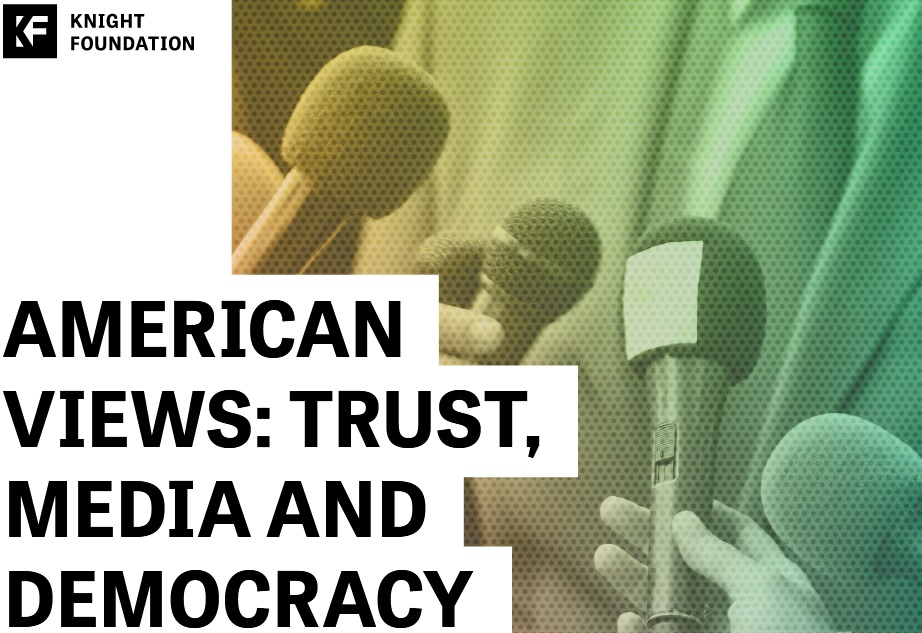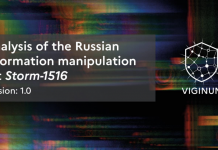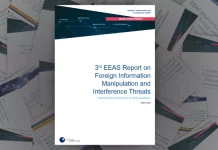Technological advances have made it easier for Americans to connect with each other and to find information, including details about the major issues facing the country. But those advances present both challenges and opportunities for individuals and U.S. institutions.
Not only is more information readily available, but so is more misinformation, and many consumers may not be able to easily discern the difference between the two.
Amid the changing informational landscape, media trust in the U.S. has been eroding, making it harder for the news media to fulfill their democratic responsibilities of informing the public and holding government leaders accountable.
Results of the 2017 Gallup/Knight Foundation Survey on Trust, Media and Democracy show that most Americans believe it is now harder to be well-informed and to determine which news is accurate. They increasingly perceive the media as biased and struggle to identify objective news sources. They believe the media continue to have a critical role in our democracy but are not very positive about how the media are fulfilling that role.
The research reported here is based on a nationally representative mail survey of more than 19,000 U.S. adults aged 18 and older. This project received support from theJohn S. and James L. Knight Foundation, the Ford Foundation, the Bill & Melinda GatesFoundation and Open Society Foundations.
KEY FINDINGS
Americans believe the news media have an important role to play in democracy, particularly in terms of informing the public, yet they do not believe the media are fulfilling that role.
- More than eight in 10 U.S. adults believe the news media are critical or very important to our democracy. They see the most important roles played by the media as making sure Americans have the knowledge they need to be informed about public affairs and holding leaders accountable for their actions.
- At the same time, Americans are more likely to say the media perform these roles poorly than to say they are performing them well.
- The public divides evenly on the question of who is primarily responsible for ensuring people have an accurate and politically balanced understanding of the news — 48% say the news media and 48% say individuals themselves.
Americans believe that it is increasingly harder to be a well-informed citizen.
- By 58% to 38%, Americans say it is harder rather than easier to be informed today due to the plethora of informationand news sources available.
- Half of U.S. adults feel confident there are enough sources to allow people to cut through bias to sort out the facts in the news — down from 66% a generation ago.
- Twenty-seven percent of Americans say they, personally, are “very confident” that they can tell when a news source is reporting factual news versus commentary or opinion.
- Based on their self-reported knowledge of current events and perceptions of how easy it is to discern truth from misinformation in news reporting, most Americans fall into the categories of either Knowledgeable Optimists, who are informed and believe it is possible to find the truth, or Inattentive Skeptics, who are less informed and pessimistic that the truth can be identified. Partisanship and education influence these beliefs.
Americans’ perceptions of the news media are generally negative, and their perceptions of bias have grown considerably from a generation ago. A majority cannot name an objective news source.
- More Americans have a negative (43%) than a positive (33%) view of the news media, while 23% are neutral.• Today, 66% of Americans say most news media do not do a good job of separating fact from opinion. In 1984, 42% held this view.
- Less than half of Americans, 44%, say they can think of a news source that reports the news objectively. Republicans who can name an accurate source overwhelmingly mention Fox News®, while Democrats’ responses are more varied.
- On a multiple-item media trust scale with scores ranging from a low of zero to a high of 100, the average American scores a 37.
- Media trust is highly influenced by partisanship, with Democrats largely trusting the media and Republicans distrusting. Older Americans tend to view the media more positively than younger adults do.
Americans are highly concerned about the effects of “fake news” on our democracy, but their definitions of “fake news” vary.
- Seventy-three percent of Americans say the spread of inaccurate information on the internet is a major problem with news coverage today; this percentage is higher than for any other potential type of news bias.3 Copyright © 2018 Gallup, Inc. All rights reserved.American Views: Trust, Media and Democracy
- A majority of U.S. adults consider “fake news” a very serious threat to our democracy.
- Americans are most likely to believe that people knowingly portraying false information as if it were true always constitutes “fake news.”
- Four in 10 Republicans consider accurate news stories that cast a politician or political group in a negative light to always be “fake news.”
Americans view many newer sources of news positively, but they are less positive about social media.
- Underscoring the changing news landscape, equal proportions of Americans rely on social media as rely on newspapers to stay informed.
- Majorities say the effect of citizen videos, the internet, cable news and news aggregators has been positive for the news environment, while a majority say the impact of social media — and politicians’ use of it to communicate directly to citizens — has been negative.
Even in the midst of technological change affecting the news environment, television news programs are the most popular news source. TV news and newspapers are most trusted.
- Roughly two-thirds of U.S. adults say they rely on television news “a great deal” or “a fair amount” for staying up to date on news.
- Internet news websites are the next-most-common source.
- Americans have the greatest trust in national network news and local and national newspapers to provide mostly accurate and politically balanced news. They trust cable news more than they trust internet news sources.•
- Younger adults (aged under 50) are more likely to consume news online, including on social media, while older adults are much more likely to watch or listen to news.
- Reliance on newspapers is most common among adults with graduate degrees, as well as those who are aged 65 and older.
The public expresses concerns about the role that major technology companies are playing in the modern news environment, but it is divided on whether they should be regulated.
- Seven in 10 U.S. adults report getting news at least occasionally from major internet platforms such as Google®,Facebook® or Yahoo®.
- The public considers these internet platforms’ methods to direct news stories to individual users based on their past browsing history problematic for democracy. However, they divide on whether these companies’ methods should be regulated.
The news media may have as much potential to reinforce existing views as they do to persuade.
- Most Americans claim to rely on a mix of liberal and conservative news sources, but one in four admit to getting news from only one perspective.
- Forty-six percent of U.S. adults claim to have firm views that rarely change.
- Americans commonly share news stories with others — primarily with like-minded people.





